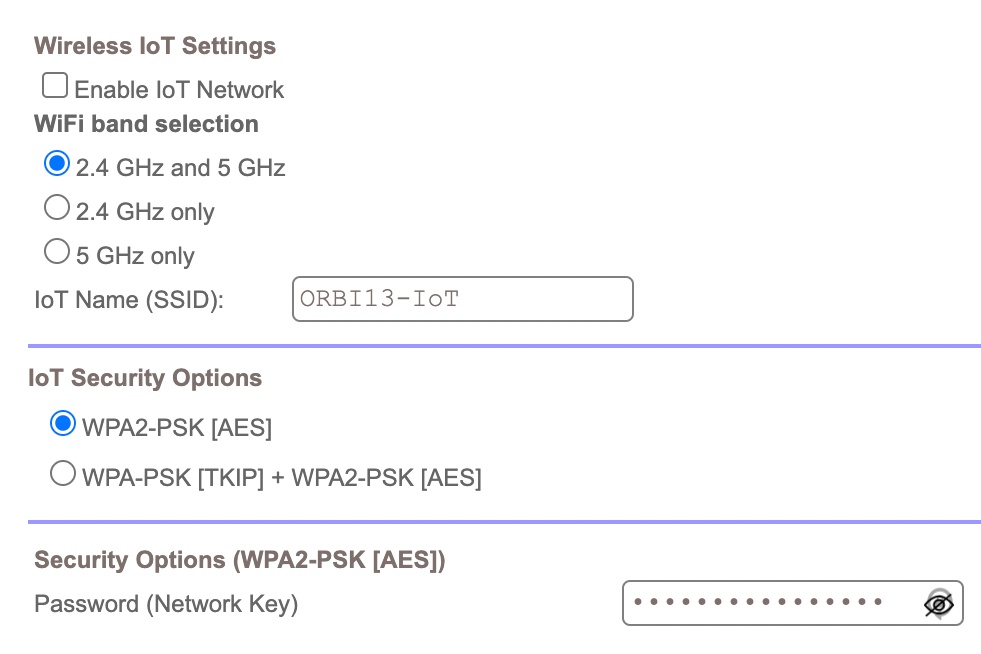What is the Netgear IoT Network?

The number of smart devices that we have is growing hugely – just take a look at your router and you may be surprised at how many devices are connected to your network. Most of us will have some combination of smart lights, heating, cameras, and streaming devices.
These smart devices are also known as Internet of Things (IoT) devices. As the number of them grows, so does the issue of managing them securely, plus the added issue that a number of them don’t support the latest wireless security standards, such as WPA3. Normally, in these instances we still recommend any privacy conscious buyer use a VPN to protect and encrypt their data. But with most not configured to work on virtual private networks that’s tricky for most non-technical users – which is where Netgear IoT Networks comes in.

Save 81% on a VPN with SurfShark
Surfshark has dropped the price of its VPN to £1.94 a month. Head over to Surfshark now to pay a one time price of £46.44 for 24 months of Surfshark and save 81%.
- Surfshark
- 81% off
- £1.94 a month
How the Netgear IoT Network works
With its latest Wi-Fi 6E Orbi RBKE963 mesh system, Netgear has added a new network, the Wireless IoT. Disabled by default, the new network can be enabled through the web interface and can be set to run on both the 2.4GHz and 5GHz bands, or just your choice of one of them.
If you’re going to set a restriction of just one band, then the 2.4GHz one makes the most sense. This is because most smart devices typically run on this type of network, whereas few run on the 5GHz band.
The main difference between the IoT network and the main network is the level of security supported. While the main network has to support WPA3 (including WPA2/WPA3 mixed mode), because of support for the Wi-Fi 6E standard, the IoT network does not.
Given that many IoT devices don’t support the latest security standards, it can be useful having a network that supports them; and, you can use the IoT network for legacy devices that don’t support the latest encryption standards, too.

What’s the benefit of having a separate IoT network?
There’s no performance benefit to having a separate network, and bandwidth is shared equally between the main network and the IoT network on the router. It may help with your own personal management, though, knowing that all smart devices are on one network, and everything else on the main network.
As mentioned above, you can also support legacy devices that don’t support the latest wireless encryption standards.
How secure is the IoT network?
Although it’s a separate network, the IoT network still runs on the same IP address range. More simply, it means that a device that connects to the IoT network can still see and connect to all other devices on your regular home network, including the router’s administration page and other devices.
If a device connected to the IoT network is compromised, hackers could connect to other devices on your network and attack them, too, regardless of the network they’re connected to.
If you turn on plain WPA support on the IoT network, then your wireless network can be more easily hacked. For that reason, it’s worth keeping the IoT network locked to WPA2 and upgrading older devices that don’t support this standard.
Note that the IoT network works differently from the guest network. With the guest network on the Orbi system (and other routers), security is boosted. Devices connecting to the guest network are put onto a different IP address range, and they can’t see or connect to other devices on your main network, but they can access the internet. A guest network is, therefore, a secure way of letting other devices connect to your home network.

Kaspersky Home Security
Keep your online activity safe and private across multiple devices – without compromising speed.
Check out Kaspersky’s new security plans from just £10.99 per year
- Kaspersky
- Money back guarantee
- from £10.99
Should you use the guest network for IoT devices?
While the guest network has some additional security features, its big drawback is that devices on it can’t see or connect to other devices. For smart products, this can cause problems. For example, you may not be able to control a smart light directly or stream from your phone to a TV.
If you are going to use the guest network as a security feature, it’s worth using it for old devices that aren’t getting firmware updates and that don’t support WPA2 encryption. Find out more about this in my guide on how to secure your smart home. The IoT network is useful only for more secure devices that don’t support WPA3 and for mentally separating your network.




